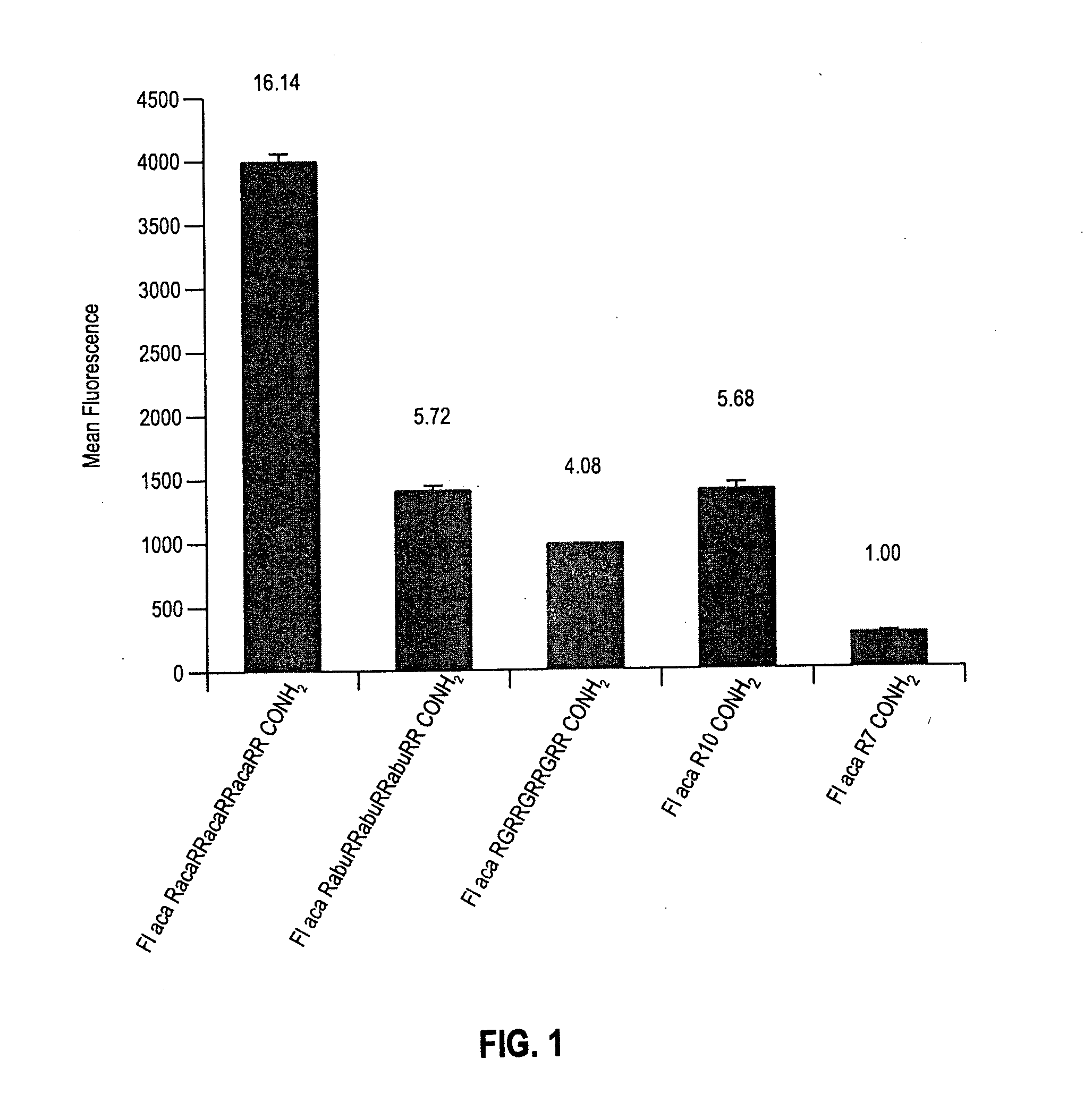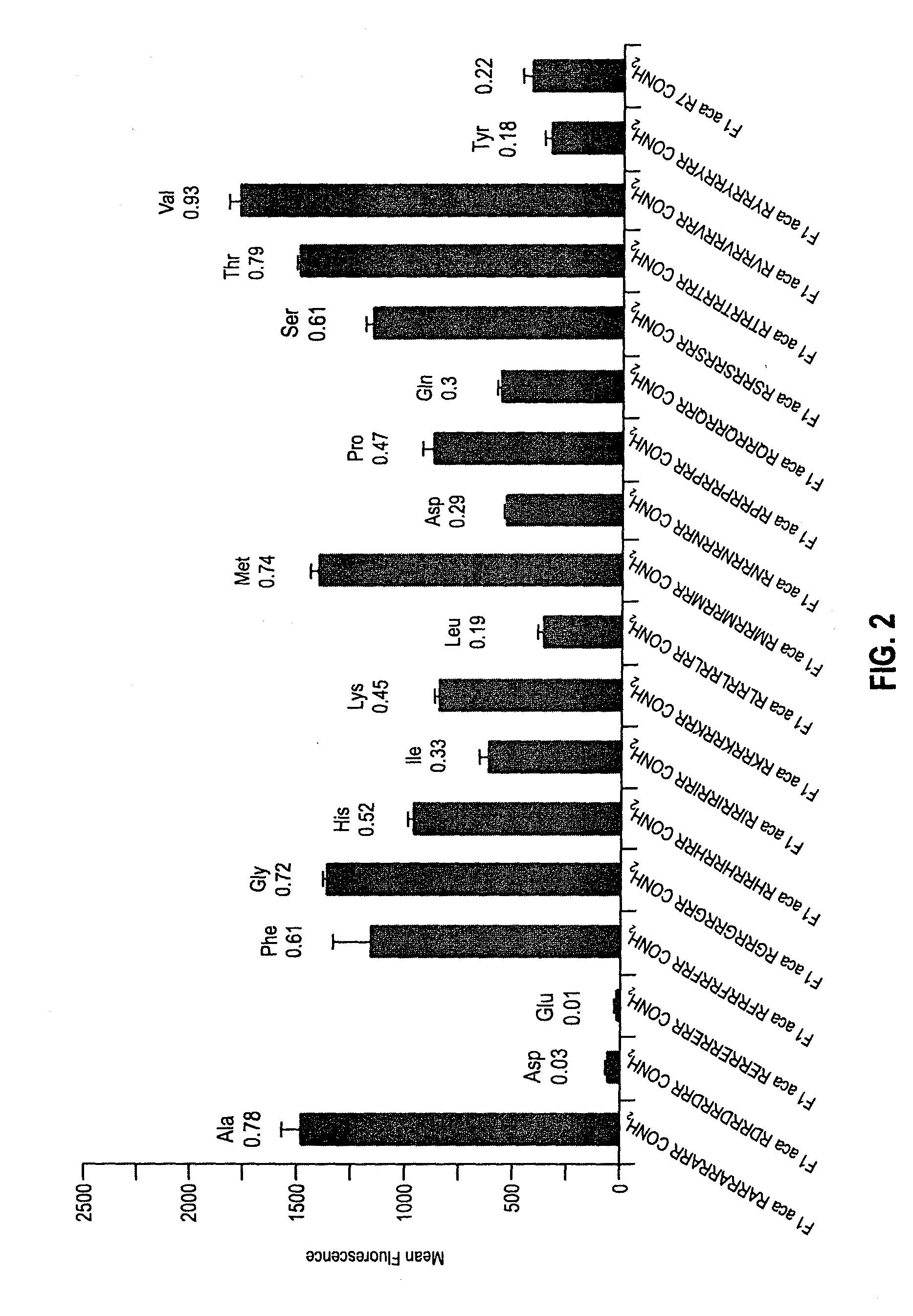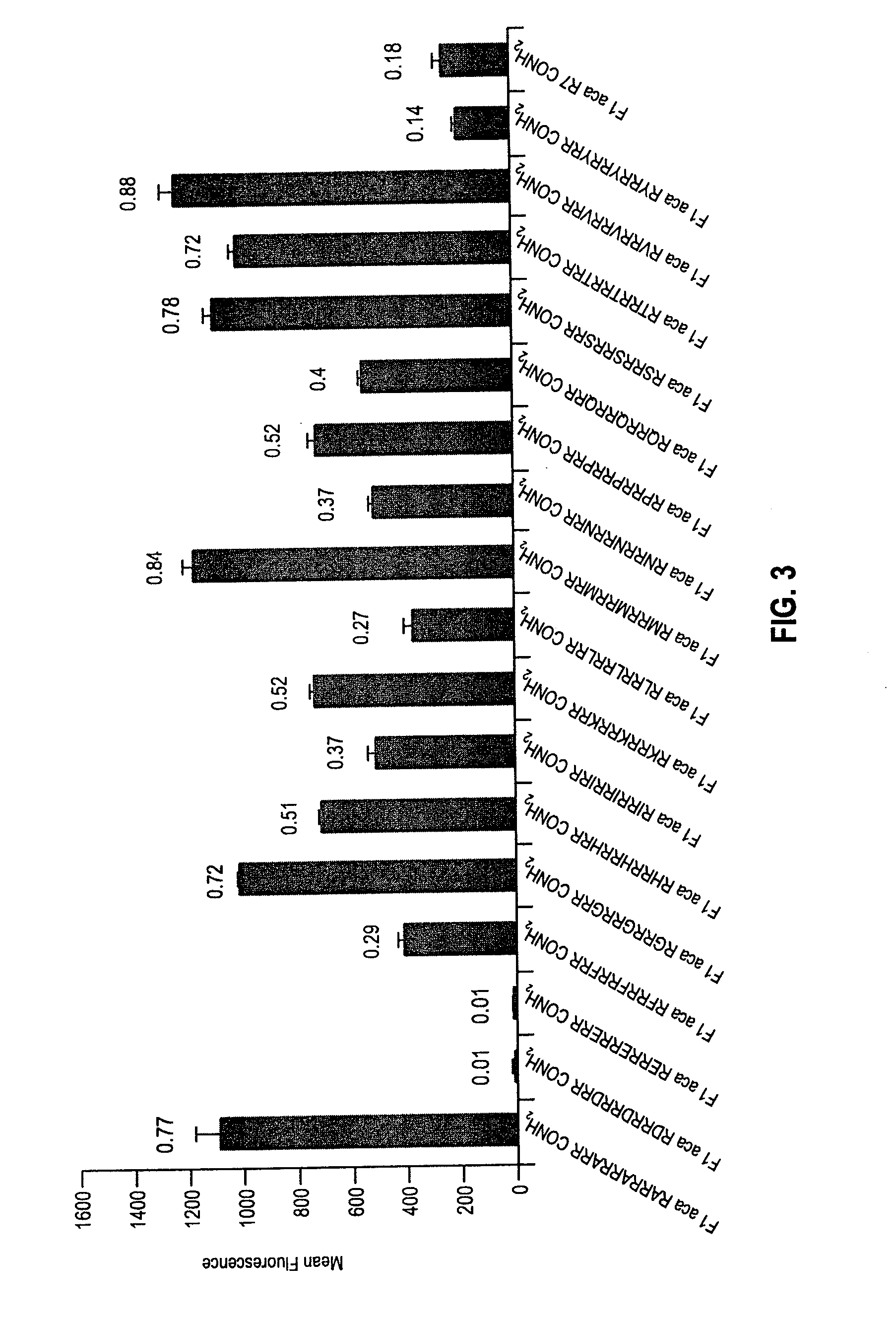Transporters Comprising Spaced Arginine Moieties
a technology of transporters and arginine moieties, which is applied in the direction of peptides, drug compositions, peptides, etc., can solve the problems of inability to efficiently access intracellular targets and hinder medicinal utility, and achieve the effect of enhancing transport and enhancing transport of biologically active compounds
- Summary
- Abstract
- Description
- Claims
- Application Information
AI Technical Summary
Problems solved by technology
Method used
Image
Examples
example 1
[0104]This example illustrates the synthesis of various peptides, including those having attached linking groups which are natural or non-natural amino acids.
[0105]Peptides were synthesized using solid phase techniques and commercially available Fmoc amino acids, resins, and reagents (PE Biosystems, Foster City Calif., and Bachem Torrence, Calif.) on a Applied Biosystems 433 peptide synthesizer. Fmoc amino caproic acid and Fmoc amino butyric acid were purchased from NovaBiochem (San Diego, Calif.). Fastmoc cycles were used with O-(7-azabenzotriazol-1-yl)-1,1,3,3-tetramethyluronium hexyluorophosphate (HATU) substituted for HBTU / HOBt as the coupling reagent. The peptides were cleaved from the resin using 96% trifluoroacetic acid, 2% triisopropyl silane, and 2% phenol for 12 hours. The longer reaction times were necessary to completely remove the Pbf protecting groups from the multiple arginines in the peptides. The peptides subsequently were filtered from the resin, precipitated using...
example 2
[0108]This example illustrates a cellular uptake assay which can be used to evaluate the conjugates of the present invention.
[0109]The fluorescently labeled peptides were dissolved in PBS, pH 7.2, and their concentrations were determined by absorption of fluorescein at 490 nm (ε=67,000). The human T cell line, Jurkat, grown in 10% fetal calf serum in DMEM, was used for all the cellular uptake experiments. Varying amounts of the peptides were added to 3×105 cells in a total of 200λ, in wells of microtiter plates, and incubated for varying periods of time, ranging from three to five minutes. The cells were spun, washed three times with cold PBS, incubated with 0.05% trypsin / 0.53 mM EDTA (Gibco, Grand Island, N.Y.) at 37° C. for five minutes, washed with PBS, and resuspended in PBS containing 0.1% propidium iodide. The cells were analyzed either using confocal microscopy or fluorescent flow cytometry (FACScan, Becton Dickinson, Milpitas, Calif.). Cells staining with propidium iodide we...
example 3
[0110]This example provides results of arginine spacing in the cellular uptake assay of Example 2.
3A—Comparison of R7 Homopolymer with Single Amino Acid Spacing (No Side Chains)
[0111]A series of arginine containing conjugates was prepared as described in Example 1 and evaluated as described in Example 2. Spacing between seven arginine residues was provided by glycine (see Seq. I.D. No. 4), γ-aminobutyric acid (see Seq. I.D. No. 5), and ε-aminocaproic acid (see Seq. I.D. No. 6). FIG. 1 shows the results of cellular uptake for the “spaced” arginine transport moieties when tethered to fluorescein. As can be seen from this figure, cellular uptake generally increases when spacing increases (ε-aminocaproic acid>γ-aminobutyric acid>glycine.
3B—Comparison of R7 Homopolymer with Naturally-Occurring Single Amino Acid Spacing
[0112]A series of arginine containing conjugates was prepared as described in Example 1 and evaluated as described in Example 2. Spacing between seven arginine residues was...
PUM
 Login to View More
Login to View More Abstract
Description
Claims
Application Information
 Login to View More
Login to View More - R&D
- Intellectual Property
- Life Sciences
- Materials
- Tech Scout
- Unparalleled Data Quality
- Higher Quality Content
- 60% Fewer Hallucinations
Browse by: Latest US Patents, China's latest patents, Technical Efficacy Thesaurus, Application Domain, Technology Topic, Popular Technical Reports.
© 2025 PatSnap. All rights reserved.Legal|Privacy policy|Modern Slavery Act Transparency Statement|Sitemap|About US| Contact US: help@patsnap.com



